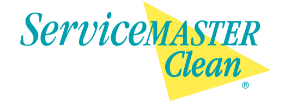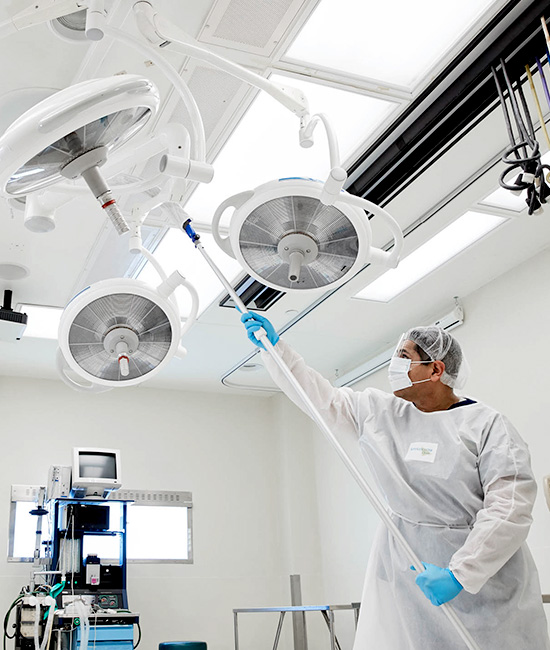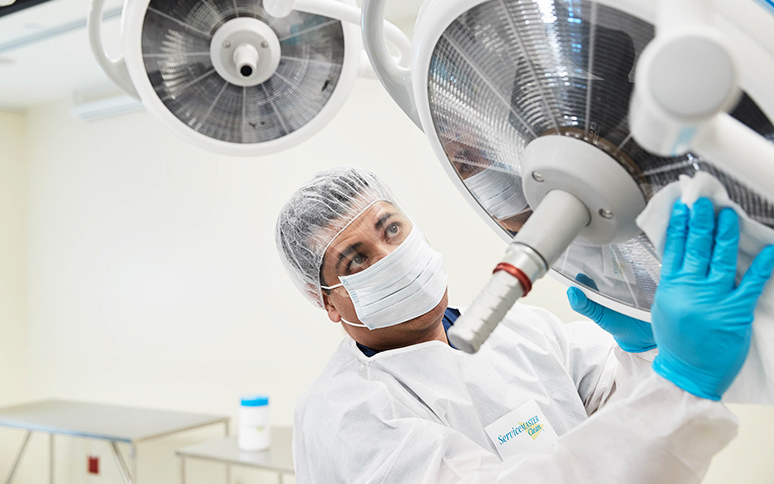High-level Disinfectant Vs. Low-Level Disinfectant
Since germs can easily spread from one person to another, it’s essential to clean shared work areas regularly. This includes healthcare environments where employees and patients are at greater risk of coming into contact with germs or developing healthcare-associated infections (HAIs).
Do you know the differences between cleaning, sanitizing and disinfecting? Some spaces in healthcare facilities may get away with a simple clean, while others areas require disinfection. Use this guide from the experts at ServiceMaster Clean to learn more about low-level, intermediate-level and high-level disinfection.
Low-Level Disinfection
Low-level disinfectants are used to disinfect noncritical items that come into contact with skin. This includes shared patient-care devices that staff would use on multiple patients through the course of any given work day, including hard surfaces like bed rails and equipment like blood pressure cuffs. When used correctly, EPA registered disinfectant wipes are considered a low-level disinfectant.
Quaternary ammonium compounds, often referred to as quats, are commonly used for low-level disinfection in areas like waiting rooms and exam rooms. Able to kill fungi, amoebas, mold, many types of microbes and most viruses, quats are an ideal choice for low-level disinfection. Refer to product labels and your facility’s cleaning protocols to determine which type of low-level disinfection you need.
Intermediate-Level Disinfection
Intermediate-level disinfectants are used to disinfect some critical items and some noncritical items that can potentially be on you. In healthcare settings, this typically means clothing like scrubs or workwear that may come into contact with problematic bacteria, infectious material or even bloodborne pathogens. According to the Centers for Disease Control and Prevention (CDC), noncritical clinical contact surfaces like operatory surfaces should be disinfected between patients with an intermediate-level disinfection as well.
Some of the most common types of intermediate-level disinfectants include these solutions:
- Quat and alcohol blends. These are able to attack pathogens like norovirus and mycobacteria.
- Bleach. Bleach is often used to disinfect clothing worn in a healthcare setting. Bleach attacks mycobacteria, small viruses and some bacterial spores.
- Bleach and hydrogen peroxide blends. These blends attack more complex bacterial spores than bleach alone.
- Handling intermediate-level disinfectants requires care. Correct dilution rates and proper personal protective equipment including masks, gloves, goggles and long-sleeved clothing are required.
High-Level Disinfection
High-level disinfectants are used on semicritical items that will come into contact with either mucous membrane or nonintact skin. These disinfectants are generally only found in healthcare settings to kill endospore-forming bacteria that can cause infection to spread in your facility. Sporicidal disinfectant products are traditionally used in surgical centers or in facilities susceptible to dangerous micro-organisms. They may also be kept in low-risk facilities in case bacterial resistance or disease outbreak occurs.
High-level disinfectant products are typically a combination of bleach and hydrogen peroxide or a blend of peracetic acid and hydrogen peroxide.
According to the CDC, some of the most common active ingredients in high-level disinfectants include the following:
- Peracetic acid
- Hydrogen peroxide
- Glutaraldehyde
- Hypochlorous acid
- Hypochlorite
- Ortho-Phthaldehyde
Since these products include more dangerous ingredients, special techniques and skills are required when handling them within healthcare settings. People who handle these products should have extensive training, proper personal protective equipment (PPE) and spill kits available to them before using the products.
If you need help cleaning and disinfecting your facility, call on the experts at ServiceMaster Clean. Our healthcare janitorial services were created with the best practices and procedures from leading organizations in mind, including the CDC and OSHA. Our services can help with infection control and prevention, risk reduction, environment improvement and much more. Find out how we can keep your facility properly cleaned and disinfected every day.









